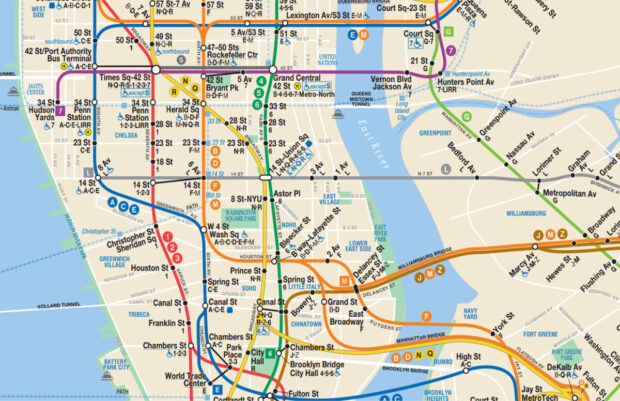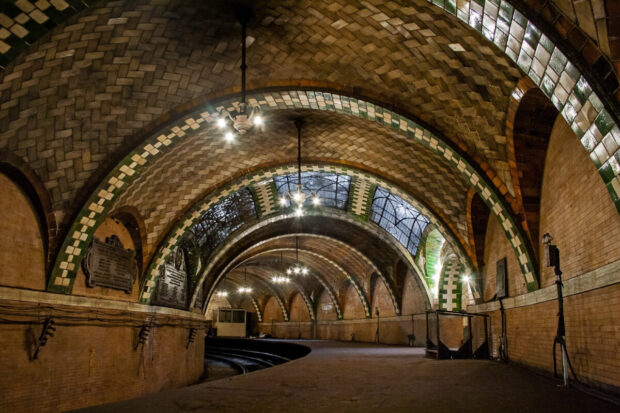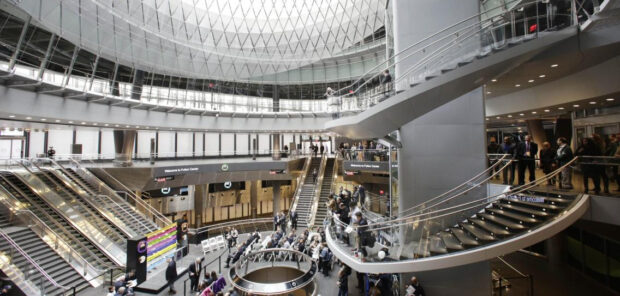In many large cities, subways take vacationers from one attraction to the next. For most vacationers, underground stops are just a stopover for the next highlight of their trip. Sometimes, however, the subway stations themselves are an attraction.
The New York subway opened in 1904 and, with over 450 stations, is one of the largest subway networks in the world. Anyone who has already been to New York will surely be surprised where one of the most beautiful subway stations in the world is supposed to be – because most of the subway stations are certainly anything but breathtaking.
READ: Top 6: New York’s Best High School
We mean it seriously. Your life will be a lot easier once you have a map on hand, but don’t worry: Even people who have lived in NYC for a long time need to take a look at the subway map every now and then.
So take a minute and look for a subway map at the train station or just ask a member of staff at the train station for a free subway map that you can take with you.

If you look at your plan, you will discover the different lines in different colors and with different numbers. New Yorkers don’t name the subway lines by their colors. So be aware that you choose the subway line you need using letters or numbers.
Even if the blue line stands for lines A, C, and E at the same time, at some point these subway lines will split up and you could potentially end up in a completely different location.
In your map you will see that some stops are marked with black dots and others with white dots. Black dots are “local” stations and the only trains that stop here are those that go to all stations on the line.
READ 6 Magical Places Near New York That Everyone Should Know About
Let’s say you want to visit the Natural History Museum on 81st Street. As you can see in the picture below, 81st Street is approached by both B and C. Since you see a black dot there, it is a local station and both B and C are local subways. The red circle marks 125th Street Station. This stop is served by both the B and C and the A and D subways.
Since there is a white dot at 125th Street, it means that subways A and D must be express subways, as they are neither at 81st Street Station nor at any of the other black dot stations after 81st Street.
If you get on the subway at Columbus Circle or 59th Street Station to go north to 81st Street Station, you can only take the B or C subway. If you get on the A or D line, you’ll get stuck on the subway all the way to 125th Street Station. You can already imagine how time-consuming it is then.

The first subway route ran from 145th Street to City Hall. The terminus was on a turning loop and was already considered one of the most beautiful underground stations in the world back then.
The reason: The underground station was built in the neo-romantic style. The vault cladding with its green and yellow tiles is unique in New York. Daylight even penetrates the station in several places. City Hall Station was closed in 1945 due to the shrinking number of passengers.
Even if the subway station is no longer served directly, it is still very busy, because the turning loop is still used by line 6 after it has reached its (new) terminus Brooklyn Bridge / City Hall. There are guided tours to the City Hall Station several times a year, but these are very popular and therefore often sell out quickly.
Travelcircus travel tip: If you haven’t got a ticket for a guided tour, you can just sit on the train at the final stop “Brooklyn Bridge / City Hall”, hide a little and then enjoy a free ride through the abandoned subway station.

The Manhattan city council hopes the Fulton Center could become a new attraction for tourists. The old New York Grand Central train station with its famous Tiffany clock is also one of the top attractions in the city.
Fulton Center is “the station of the 21st century,” said Michael Horodniceanu, who led the construction project for New York City Transportation Company MTA.
As befits a mega project of this size, the Fulton Center naturally had to grapple with some setbacks. The station was originally supposed to open in 2007. The construction costs almost doubled from a planned $ 750 million to $ 1.4 billion.
READ 24 Hours in Harlem: Is It Real
One of the reasons lies in the history of the New York subway. The old stations of the train lines converging in the Fulton Center originally belonged to three rival subway companies.
The Corbin Building above the subway station also gave Horodniceanu a major headache. The building from 1899 is one of the oldest skyscrapers in the city. The architects first had to reinforce the foundations of the house before they could dig under the Corbin Building.
Nevertheless, the static situation was too delicate, so that the workers had to go to work with picks and shovels instead of modern drills. All workers were also connected to an alarm system via their smartphones. If the building had moved, the phone’s vibrating alarm would have gone off immediately.
Like us on Facebook for more stories like this: